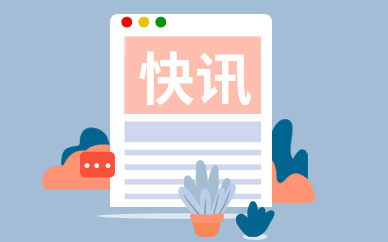Xinhua Headlines: China uses technological innovations to strengthen water resources protection-天天聚看点
* Over recent years, China has vigorously strengthened the protection of water resources as part of its efforts to build a green, beautiful and sustainable future.
* The latest technological innovations have played a big part in boosting the efficiency and effectiveness of water resources management.
 (资料图片仅供参考)
(资料图片仅供参考)
* The development of mobile technology has also provided environmental regulators, as well as members of the public, with a powerful and handy tool to tackle environmental violations.
XINING, March 22 (Xinhua) -- Black-necked cranes were leisurely playing in wetlands, casting arc-shaped reflections on the clear water; more than 200 sheep were strolling on a hillside on the bank of a section of the Yangtze River.
These were live feeds from a monitoring system on water resources and wildlife set up in the Sanjiangyuan area in northwest China, which contains the headwaters of the Yangtze, Yellow and Lancang rivers.
The system is composed of video cameras at multiple observation points, a private network that allows real-time video feeds, and a management and control platform, forming an important part of the ecological monitoring network in Sanjiangyuan.
This photo taken on March 12, 2022 shows the view of Gyaring Lake at the Yellow River source region of Sanjiangyuan National Park in northwest China"s Qinghai Province. (Xinhua/Lyu Xueli)
Over recent years, China has vigorously strengthened the protection of water resources as part of its efforts to build a green, beautiful and sustainable future. In the process, the latest technological innovations have played a big part in boosting the efficiency and effectiveness of water resources management.
The Yushu Tibetan Autonomous Prefecture of Qinghai Province, which administers a part of the Sanjiangyuan area, delivers about 29.7 billion cubic meters of clean water to downstream regions on average every year. It is home to the world"s most primitive and largest alpine ecosystem, where glaciers, snow-capped mountains and high-altitude wetlands play a key role in the conservation of river headwaters.
Yushu has in recent years spent more than 8 million yuan (about 1.16 million U.S. dollars) on building the monitoring system, said Dorga, head of the Yushu ecology and environment bureau, adding that 35 observation points have been set up in the prefecture.
"The system has effectively provided on-site observation and analytical tools for water source protection, solving the problems of slow response, high cost and limited coverage associated with human patrols," Dorga said.
This aerial photo taken on Oct. 20, 2021 shows rangers patrolling in the Sanjiangyuan National Park in Golog Tibetan Autonomous Prefecture, northwest China"s Qinghai Province. (Xinhua/Zhang Long)
In the north of China, the Haihe River, dubbed the "mother river" of Tianjin Municipality, plays a crucial role in the city"s flood discharge, water storage and urban environment.
After placing a white unmanned boat about a meter in length on the Haihe River, Mei Pengwei began to monitor on a laptop the sonar images the boat sent back as it headed toward the river center.
Mei works in the Tianjin Eco-Environmental Monitoring Center. Since 2019, Mei and his colleagues have been routinely monitoring the conditions of the Haihe River and its tributaries.
In 2017, the water quality of 12 rivers in Tianjin, including the main stream of the Haihe River, was graded below Class V, which means too polluted for any purpose, including irrigation.
This aerial photo taken on March 26, 2022 shows bridges over the Haihe River in north China"s Tianjin. (Xinhua/Sun Fanyue)
In recent years, the local government started a campaign against water pollution by using advanced devices, including unmanned ships equipped with sonar, unmanned aerial vehicles (UAVs) and satellite remote sensing.
"As some parts of the river are hundreds of meters wide with marshes and grass on the banks, it is very hard for our monitors to get into the river," said Gao Kai, senior engineer at the monitoring center, explaining the necessity of the unmanned devices.
According to Gao, UAVs can provide real-time photos or videos of the river conditions and locate pollution on the river surface, while unmanned ships are able to locate underwater sewage pipes through sonar detection.
After a suspected case of pollution is detected, monitoring experts rely on satellite remote sensing for information about nearby enterprises, residential areas and business districts, before making field trips to pinpoint the source of the pollution.
"With the help of technology, we have conducted pollution source investigations, while also monitoring water quality and aquatic biology in a more accurate and effective manner," Mei said.
Now, the water quality of 12 rivers in Tianjin has significantly improved, upgrading to class IV in general, which is suitable for agricultural and certain industrial uses.
This aerial photo taken on April 24, 2022 shows a view of the Nandi Coastal Trail Park in the Sino-Singapore Tianjin Eco-City at Binhai New Area of north China"s Tianjin. (Xinhua)
The development of mobile technology has also provided environmental regulators, as well as members of the public, with a powerful and handy tool to tackle environmental violations.
In Xiangtan City, Hunan Province, local authorities have promoted a new and modern system of water resources management, which relies heavily on mobile technology.
They have taken the lead in the province in developing an electronic map of the city"s water system and a mobile app called "Smart Water Management," which allows one to easily monitor the river situation with just a few taps.
Zhang Chaoqun is a river chief in charge of an 8.8-km-long section of the Xiangjiang River, which flows through Xiangtan. He has been patrolling this section every day since 2017.
Every time he detects a problem, such as river pollution or illegal fishing, Zhang takes a photo on the spot and uploads the relevant information through the mobile app. After relevant government administrations investigated and solved the problem, he always receives feedback on the app.
"The app is very convenient. Violations are usually redressed within five working days," Zhang said, adding that it helped river chiefs like him better carry out their duties.
(Video reporters: Wu Yao, Hong Ling, Li Yuhui, Chen Xiaoyu, Shang Kunlun, Jiang Liang, Yue Wenting, Liang Shun, Wang Qiwen, Wang Wei, Aman, Li Zhihao; video editors: Wu Yao, Li Qin, Mu Xuyao)
关键词:
-
 Xinhua Headlines: China uses technological innovations to strengthen water resources protection-天天聚看点 *Overrecentyears,Chinahasvigorouslystrengthenedtheprotectionofwaterr
Xinhua Headlines: China uses technological innovations to strengthen water resources protection-天天聚看点 *Overrecentyears,Chinahasvigorouslystrengthenedtheprotectionofwaterr -
 GLOBALink | Int'l agricultural cooperation bears fruit in China's Hainan AgriculturalcooperationbetweenChinaandtheworldhasbornefruitatatropic
GLOBALink | Int'l agricultural cooperation bears fruit in China's Hainan AgriculturalcooperationbetweenChinaandtheworldhasbornefruitatatropic -
 世界观热点:雷曼前副总裁批美联储政策不当:或再导致全美50家银行破产 美国硅谷银行破产,储户排长队取款。(资料图)海外网3月23日电据“今日俄罗斯”国际通讯社22日报道,雷曼兄弟前副总裁劳伦斯·麦克唐纳...
世界观热点:雷曼前副总裁批美联储政策不当:或再导致全美50家银行破产 美国硅谷银行破产,储户排长队取款。(资料图)海外网3月23日电据“今日俄罗斯”国际通讯社22日报道,雷曼兄弟前副总裁劳伦斯·麦克唐纳... -
 西摩•赫什:美国中情局炮制假新闻掩盖“北溪”被炸真相|全球观察 中新网3月23日电据“今日俄罗斯”(RT)报道,当地时间22日,美国资深调查记者西摩·赫什在社交平台上再发文,指责美国中央情报局(CIA)向...
西摩•赫什:美国中情局炮制假新闻掩盖“北溪”被炸真相|全球观察 中新网3月23日电据“今日俄罗斯”(RT)报道,当地时间22日,美国资深调查记者西摩·赫什在社交平台上再发文,指责美国中央情报局(CIA)向... -
 中国代表在联合国人权理事会第52届会议回击西方国家抹黑污蔑 中新社日内瓦3月22日电联合国人权理事会第52届会议正在日内瓦举行,中国代表22日在会议议题四一般性辩论发言,回击西方国家抹黑污蔑,揭批西方
中国代表在联合国人权理事会第52届会议回击西方国家抹黑污蔑 中新社日内瓦3月22日电联合国人权理事会第52届会议正在日内瓦举行,中国代表22日在会议议题四一般性辩论发言,回击西方国家抹黑污蔑,揭批西方 -
 全球安全倡议符合国际社会共同利益_世界简讯 埃及是发展中国家,我们对零和博弈政策非常反感。世界各国应共同维护以联合国为核心的国际体系、以国际法为基础的国际秩序、以联合国宪...
全球安全倡议符合国际社会共同利益_世界简讯 埃及是发展中国家,我们对零和博弈政策非常反感。世界各国应共同维护以联合国为核心的国际体系、以国际法为基础的国际秩序、以联合国宪... -
 旧金山唐人街:东西文明的百年交流(海外学子看海外) 旧金山唐人街内的龙门建筑。图片来自网络提起旧金山,很多人并不陌生。这座城市既是美国西海岸的金融和贸易中心,也是多元文化交融的场...
旧金山唐人街:东西文明的百年交流(海外学子看海外) 旧金山唐人街内的龙门建筑。图片来自网络提起旧金山,很多人并不陌生。这座城市既是美国西海岸的金融和贸易中心,也是多元文化交融的场... -
 微动态丨牙买加媒体:驼铃古道串起中国与世界 牙买加loopnews网站3月21日文章,原题:骆驼走过的地方:模式口保存着中国历史想象一下,沿着一条曾被骆驼在数千年前用来运送丝绸、香料、工艺
微动态丨牙买加媒体:驼铃古道串起中国与世界 牙买加loopnews网站3月21日文章,原题:骆驼走过的地方:模式口保存着中国历史想象一下,沿着一条曾被骆驼在数千年前用来运送丝绸、香料、工艺 -
 债市统一监管有利防范化解风险|环球热推荐 根据《党和国家机构改革方案》,证监会划入国家发展和改革委员会的企业债券发行审核职责,统一负责公司(企业)债券发行审核工作。这是...
债市统一监管有利防范化解风险|环球热推荐 根据《党和国家机构改革方案》,证监会划入国家发展和改革委员会的企业债券发行审核职责,统一负责公司(企业)债券发行审核工作。这是... -
 【粮食大事】着眼推广变“专家田”为“农民田” 当前热门 春分时节,农事正忙。各地农民正在抢抓农时,播种育苗,强化田间管理,为全年粮食丰收打好基础。在环境资源的硬约束下,各地继续把创建...
【粮食大事】着眼推广变“专家田”为“农民田” 当前热门 春分时节,农事正忙。各地农民正在抢抓农时,播种育苗,强化田间管理,为全年粮食丰收打好基础。在环境资源的硬约束下,各地继续把创建...
热点
-
 动态焦点:三水区卫生监督所入选“全省十佳” 砥砺奋进,再启新途。奋进20年,佛...
动态焦点:三水区卫生监督所入选“全省十佳” 砥砺奋进,再启新途。奋进20年,佛... -
 每日播报!南海法院发布2022年度小额诉讼十大案例 近年来,佛山市南海区人民法院(下...
每日播报!南海法院发布2022年度小额诉讼十大案例 近年来,佛山市南海区人民法院(下... -
 全国水利工程供水能力超过8900亿立方米 时讯 今天(3月22日)是第三十一届“世...
全国水利工程供水能力超过8900亿立方米 时讯 今天(3月22日)是第三十一届“世... -
 热讯:“佛山知识产权支撑制造业当家”高端沙龙活动举行 佛山新闻网讯佛山日报记者陈意威通...
热讯:“佛山知识产权支撑制造业当家”高端沙龙活动举行 佛山新闻网讯佛山日报记者陈意威通...
文章排行
娱乐图赏
-
 本周六 西安钟楼等地标建筑将熄灯一小时 3月25日(本周六),西安市2023年...
本周六 西安钟楼等地标建筑将熄灯一小时 3月25日(本周六),西安市2023年... -
 微信怎么设置提醒微信红包来了|天天热议 1、点击手机桌面中的“手机管家”...
微信怎么设置提醒微信红包来了|天天热议 1、点击手机桌面中的“手机管家”... -
 天天快看:汽车上evc是什么 汽车现在已经越来越普及,基本上都...
天天快看:汽车上evc是什么 汽车现在已经越来越普及,基本上都... -
 全球热门:花都冰雹橙色预警!强对流来了,广州多区雷雨大风预警 强对流来了,遇冰雹暴雨请注意躲避!
全球热门:花都冰雹橙色预警!强对流来了,广州多区雷雨大风预警 强对流来了,遇冰雹暴雨请注意躲避!